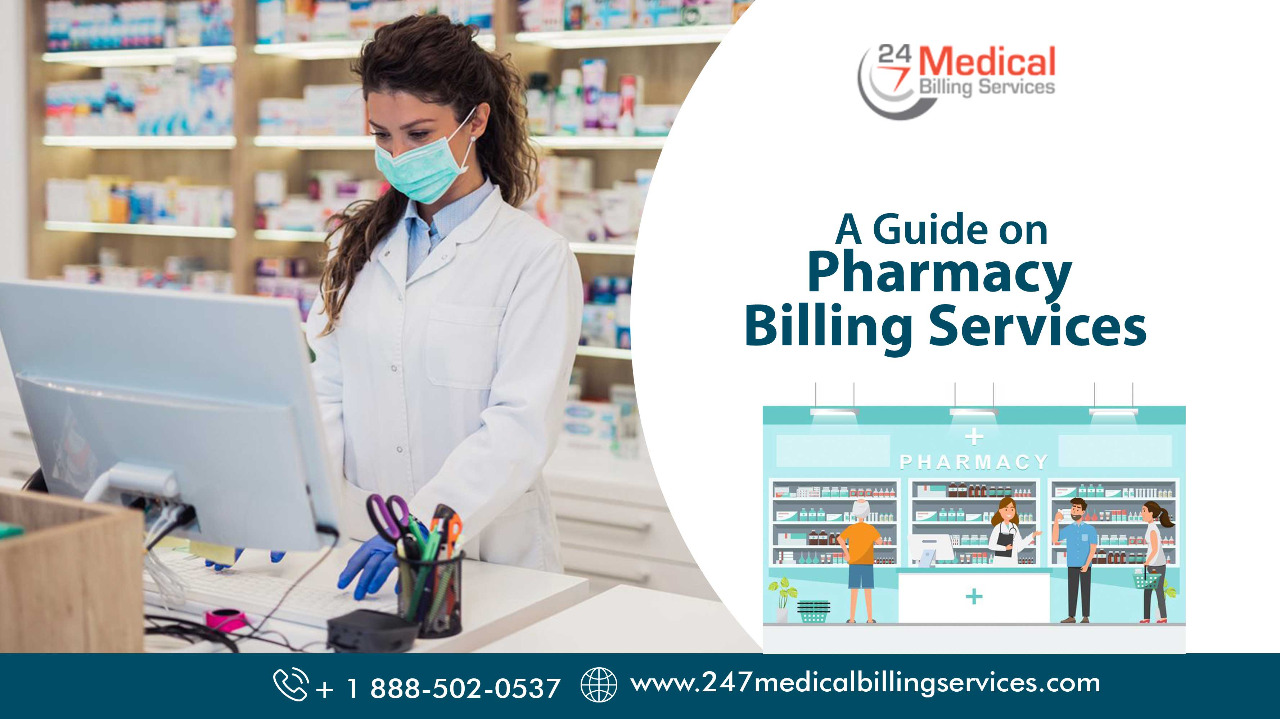
A Guide to Pharmacy Billing Services
A regulatory framework that changes every now and then, multiple competition threats, various locations of operations and so many more. Pharmacy services are always covered with the dark clouds of such challenges and they hinder accuracy in billing for pharmacy services. This is detrimental for pharmacy companies with a need for improvement in customer relations and boosting their top line revenue. The resources might be lacking such as requisite expertise, enough technology adoption, and a properly operating system affect the entire pharmacy services billing process. In this competitive marketplace, pharmacy billing services are experiencing some of the unique challenges that are required with an industry-specific focus for their resolution.
We have curated this article to give you an idea about how pharmacy billing services work for your pharmacy business and here are the top 6 things you should know about them…
A Drug Trend report from 2009 predicted that there will be continuous price rises in traditional branded and biotech drugs that lack generic competition. Unfortunately, this trend proved right. Now CMS has reduced its average sales price (ASP) margin to 4 percent from 6 percent for non-pass-thorough. This is directly impactful on pharmacy reimbursement. But there are so many other sides of pharmacy billing that may affect it, and thereby, you need support from expert pharmacy billing companies in order to implement the billing processes simply into your business.
1. Data Workflow:
Identifying how the revenue cycle and medical billing work in pharmacy are very important. Procurement to inventory, billing, and reimbursement has medication purchase, their storage, and ways of dispensing, how they are administered, the method of their coding and billing, and finally reimbursed. If the drug is under a pharmacy benefit, or the payer needed it to be gained through a specialty pharmacy as recognized through patient-specific benefit verification, then here, both the pharmacy and the provider are part of the reimbursement process. The clinic or physician creates a prescription and places an order for the drug. Further, the pharmacy fills the order and passes the drug to the physician, CMHC, or hospital outpatient department. Here, the insurance company is charged for the drug. If any information is put incorrectly into the pharmacy system in the beginning phase of the cycle, errors may be costly, impacting aspects of the clinical and revenue cycle.
2. Procurement:
In this phase, the information is converted from purchase quantities and pricing to storage units of measure (UOM) and inventory prices. In most cases, data is entered manually. UOM conversions, when data is stored from the wholesale seller to the pharmacy system, are also verified and checked manually. Here, mistakes can lead to a breakdown in the revenue cycle management (RCM) process.
3. The Charge master:
Critical leakage of revenue may lead to more difficulties when separately reimbursable medications have either been missed or miscoded in the charge master. Converting pharmaceutical quantities is necessary from purchased amounts to patient-administered amounts, and only then it can be billable. Usually, there is a difference between amounts of dosage required for patient use as to that purchased. Apart from inventory, the physician and pharmacist should convert dosage, strength, and delivery technique for each drug. Drug related data should be correctly converted from the quantities present in clinical systems into the payer-billable quantities accurate for the financial system or charge master. The UOMs should be reimbursed to reduce the chances for any under- or over-payments. Often or more, inaccurate or missing data in the charge master may result in negative financial atmospheres– denied claims, partial reimbursement, and compliance risks.
4. Connection between Purchases & Billing:
Most physicians and clinics have different processes to order drugs, administer them, and process reimbursement. With no connection between pharmacy expenses for medications (i.e., spend data) and the charge master, making sure a proper charge capture and proper reimbursement is a struggle. Other than this, hospitals should have automation tools to understand charge capture errors accurately, so as to point out when and where they occur to reducing revenue loss.
5. Coding:
Appropriate HCPCS codes are required for drug recording, it not done properly, or whose revenue code is incorrect in the charge master – this upshift in liability to a patient or a payer leads to the hospital not getting proper reimbursement. Sometimes, CMS can't even return a denial error as an alert to the hospital which may cause a result in tens of thousands of dollars in revenue leakage and compliance risk.
6. Drug Prices:
Physicians and clinics may get drugs at a higher rate than they are being paid by fixed-fee-based payers. Cost-saving chances and generic options may be available but are not fully accessible. Every pharmacy should possess a system for regularly comparing drug spending to reimbursement.
24/7 Medical Billing Services provides customized and comprehensive pharmacy billing services to get your pharmacy billing management to another level with accuracy. Utilizing our in-depth understanding of the business processes, 24/7 Medical Billing Services can deliver the perfect customizations so as to keep the system as close to reality as possible. This is why we are able to greatly reduce the struggles of our clients to get used to our system. Another reason why our pharmacy billing services are good for pharmacy businesses is that they highly reduced operating costs. Also, we strictly follow and abide by coding rules and HIPAA compliance guidelines. We document drug category reviews and perform periodic compliance audits to decrease drug coding errors. All these things are required for accurate billing and reimbursements.

.png)